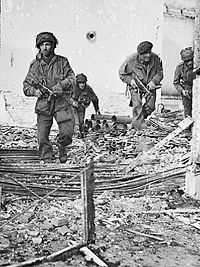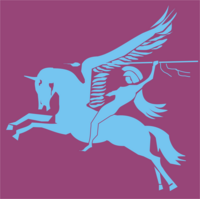4th Parachute Brigade
| 4th Parachute Brigade | |
|---|---|

Men of the 4th Parachute Brigade in Oosterbeek during the Battle of Arnhem, part of Operation Market Garden, September 1944.
|
|
| Active | 1942–1944 |
| Country |
|
| Branch |
|
| Type | Airborne forces |
| Role | Parachute infantry |
| Size | Brigade |
| Part of | 1st Airborne Division |
| Nickname(s) | Red Devils |
| Engagements |
Operation Slapstick Operation Market Garden |
| Commanders | |
| Notable commanders |
John Hackett |
| Insignia | |
| Emblem of the British Airborne Forces. |  |
The 4th Parachute Brigade was an airborne, specifically a parachute infantry, brigade formation of the British Army during the Second World War. Formed in late 1942 in the Mediterranean and Middle East, the brigade was composed of three parachute infantry units, the 10th, 11th and 156th Parachute Battalions.
The brigade was assigned to the 1st Airborne Division, just prior to the Allied invasion of Sicily, but played no part in the invasion. Instead the brigade first saw action in September 1943, during Operation Slapstick, an amphibious landing at the port of Taranto, as part of the early stages of the Allied invasion of Italy. Largely unopposed, the brigade captured the ports of Brindisi and Bari before being withdrawn. By the end of the year, the 4th Parachute Brigade was in England, preparing for the Allied invasion of North-West Europe. The brigade did not see action in France, being instead placed on standby for an emergency during the Normandy landings. Between June and August 1944 the speed of the subsequent Allied advance obviated the need to deploy airborne forces.
...
Wikipedia
